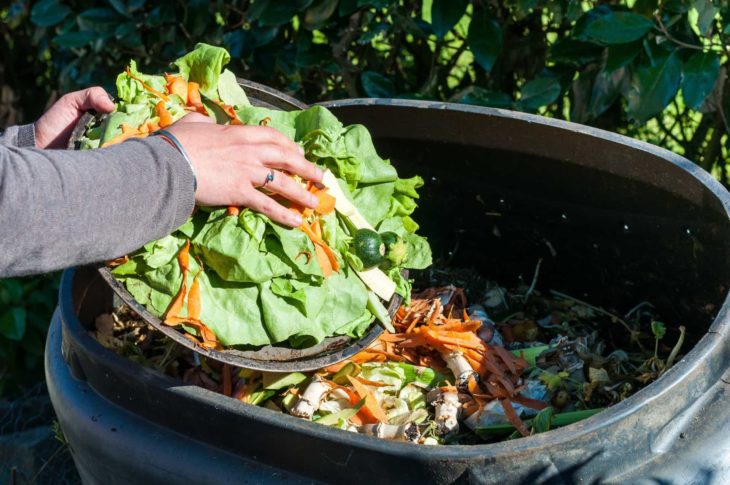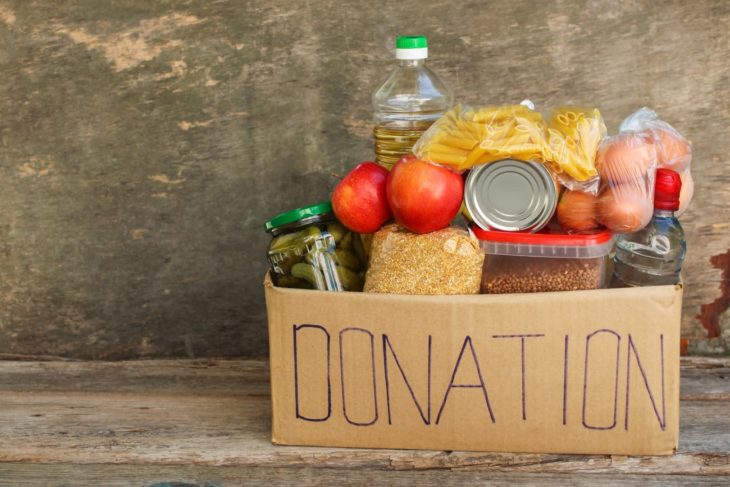In the USA, 40% of all the food produced ends up in a landfill, and that is an alarmingly high number. The percentage is spread into different parts of the supply chain – farming, distribution, storing, and households throwing food away. The reason why so many products are disposed of ranges from the items being determined as inedible because of poor harvest, transportation issues, malfunctioning storing facilities, or our inability to consume them in time.
Not only do we throw out large amounts of food every day, but we waste resources like water, gasoline, labor, pesticides, or land as well. It is troubling to see how much waste we produce, considering that over 42 million Americans face food insecurity every single day.
Speaking of which, the National Resource Defense Council determined that if we were to save only 15% of our waste, we would feed 60% of people struggling to get food on the table. Remembering any of these statistics will not make a difference, but you can still do something about it. Everyone can directly influence the fate of those in need by slightly shifting our habits. Since 43% of all food waste occurs at home, we have the power to make a difference, not mentioning that the simple act of throwing food away results in households losing money.
From the broader point of view, dealing with food waste has an environmental cost, as well. Agriculture, the source of food supply, accounts for overall 20% of greenhouse gas emissions. Consequently, we need to take into consideration another 7% of global emissions created by dealing with everything we produced but were unable to consume. When put together, feeding us creates 27% of all greenhouse gases in the world, contributing to climate change.
Having read how much waste we produce and its consequences, here are some solutions on how to turn our waste into resources:

Source: Stars Insider
As mentioned at the beginning of the article, landfills overflowing with garbage are a real problem in the United States. Moreover, they release a lot of greenhouse gases into the atmosphere. So, you can start by adequately composting your waste when it is no longer an option to donate any of the leftover food. There are many composting facilities you can choose from that will put your trash to use further (organic fertilizer) and reduce its overall environmental impact.
The reason why composting is a better option than a landfill is a difference in how they decompose the waste. During composting, the waste has access to air, which is called aerobic decomposition, as compared to landfills, where everything is being decomposed without the access of air – anaerobically. The differentiation between those two is significant because aerobic decomposition produces mainly carbon dioxide, while anaerobic decomposition generates 50% carbon dioxide and 50% methane. As a greenhouse gas, methane is 86 times more potent than carbon dioxide, so it causes much more damage. Therefore, composting in your garden, or finding a composting facility will help turn your waste into a resource with less environmental impact.
However, the most effective way to achieve something is to start from the very top. By limiting the food production itself, there would be less that could get spoiled, or thrown out. Unfortunately, that is not something easily achieved by larger organizations, let alone by individuals. On the other hand, helping to feed hungry people is well within our capabilities. Donating money, leftovers, or cans to food pantries is a great way to start.

Source: myplanet
According to government data, Americans throw away $165 billion worth of food every year, out of which $293 million is wasted on Thanksgiving Day. Thanksgiving is a beautiful tradition during which the whole family gets together to cook a nice meal, talk about life, and have a fun time together. At the same time, Thanksgiving is also a holiday during which large amounts of waste are produced, since most of the time, there is an excess of food on the table rather than a shortage.
At the end of the day, we need to deal with the leftovers from our delicious Thanksgiving dinners. In all honesty, there are only so many turkey sandwiches, reheated mashed potatoes, and slices of pecan pie that we can handle in a week. So, what are some other options we have that will help us deal with the leftovers?
There are many organizations, such as food banks, food rescue organizations, and organizations with food donation programs. If you are interested in donating your Thanksgiving leftovers, try contacting Rescuing Leftover Cuisine, whose team was able to save 2,722 million pounds of food, and serve 2,310 meals since 2013. Alternatively, you can find the nearest food pantry, get in touch with them, and ask about their food donation policies. Some pantries only accept unopened/unprocessed food, but many will take your leftovers, especially around Thanksgiving.

Source: Ueni
Food donation is a great way to participate in reducing waste and feeding the hungry, not only for households but for corporate companies as well. For instance, Moishe’s Moving and Storage, based in New Jersey and New York City, uses its resources to help with the logistics of Thanksgiving donations. Every single year around Thanksgiving, multiple team members at Moishe’s all jump in one of their big red trucks to ride down to St Bart’s Church and provide bountiful food deliveries on Fare Share Friday: this is an annual celebration in New York City, where everybody has a seat at the table to enjoy a warm Thanksgiving meal with others. Moishe’s generosity is something that we can all learn from and look up to. Why waste food when we can share it?
In short, don’t forget how hard it is to produce food, how essential food is for us, and how much of it gets needlessly wasted every year. With that in mind, try to reduce your waste. Or donate anything you were unable to consume to food pantries, helping the environment and those facing food insecurity.
